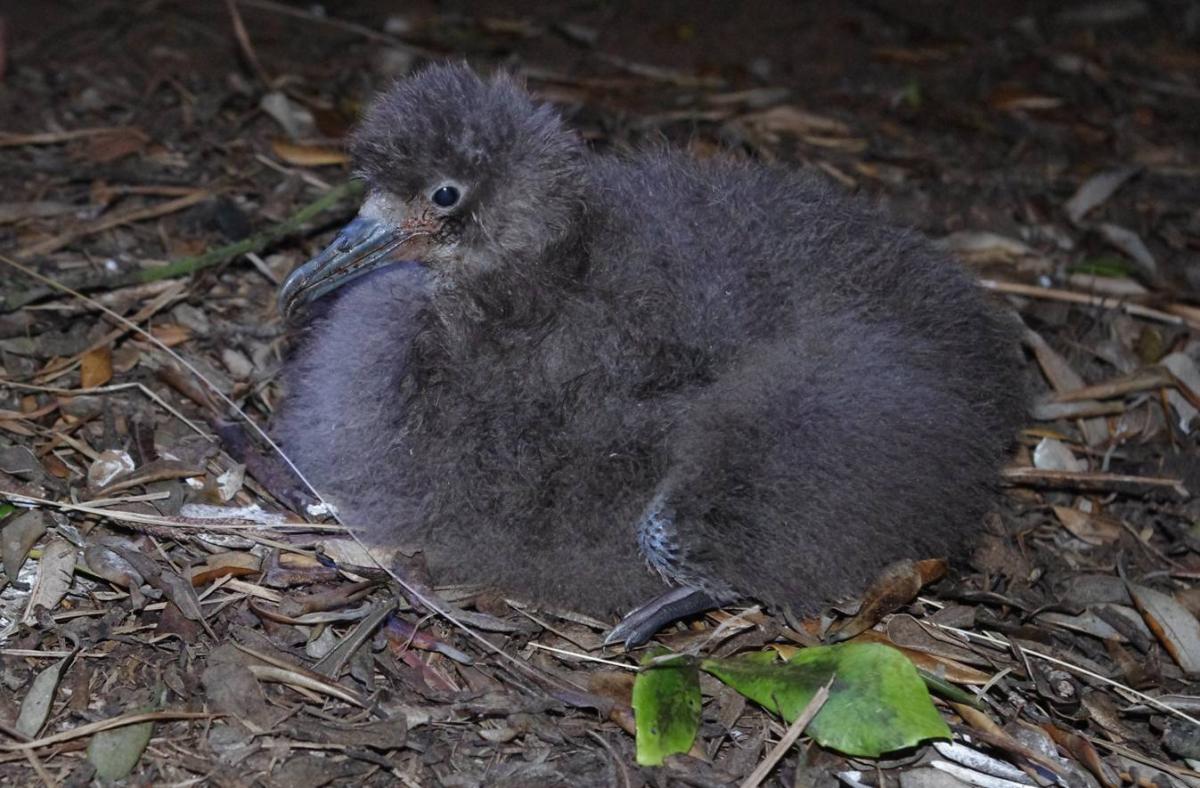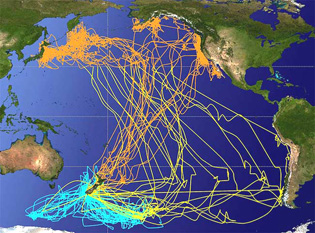
The Tuia Mātauranga GeoTour is about having fun discovering the history of Aotearoa New Zealand by finding sites of significance in local communities from early Pacific voyaging and migration, European settlement to present day. The interaction between people, and people and the land have provided a rich history that the GeoTour invites you to explore.
Recently Mrs spent a bit of time in Oraka/Colac Bay at the nearby ‘Takutai o Te Tītī’ Marae. During her time there the kaumatua shared about the tītī and his whanau’s whakapapa/connection to these birds. The name of the marae ‘Takutai o Te Tītī’ celebrates the annual event of tītī returning to and feeding all along the southern coastline.

So what are Tītī?
Tītī are a common small (800g) dark seabird generally found along the coastline south of Banks Peninsula during New Zealand’s summer months. They are known as Sooty shearwaters, muttonbird (due to tasting like sheep meat), and titi. They may occur in flocks of tens of thousands, particularly around the southern South Island and Stewart Island, when they congregate on bait balls of crustaceans and feed by flying into the water from a shallow angle, creating a spectacular sight.

The titi are migratory seabirds traveling over 64,000km each year across all the world’s oceans and returning to the islands off the coast of Stewart Island and sub-antarctic island’s (the Snares, Auckland, Chatham, Antipodes and Campbell Islands) to bred. They dig burrows in which they build their nest and the female then lays one egg late November/early December. Once the chick has grown they leave their nest and fly around the Pacific Rim for 7 years before returning as adults to the burrow that they were hatched in. They then return each year to lay their eggs and the cycle of life continues.
The Titi Island’s:
The Titi Islands surrounding Rakiura/Stewart Island consist of three groups:
North-eastern groups 46°51′S 168°15′E - North, Women's, Edwards, Jacky Lee, Herekopare and Kanetetoe Islands; The Bunker Islets, and Fish Rock.
Eastern group 47°06′S 168°12′E - Rukawahakura, Takawini, Potuatua, Pomatakiarehua, Kaihuka and Wharepuaitaha Islands.
Southern, or south-western, group 47°13′S 167°25′E - Four distinct groups of islands make up the south-western chain. Close to Stewart island's south-westernmost point is Taukihepa/Big South Cape Island, close to which lie Poutama, Putauhina, Solomon, Kaimohu, Pukaparara, Tamaitemioka and Pohowaitai Islands and the Putauhina Nuggets. In the open sea 8 km to the north lie Big Moggy, Little Moggy and Mokinui Islands. To the east of these, close to Stewart Island, the 'Boat Group' consists of Big, Kundy, Betsy and Rat Islands. To the south of these lie the small rocky islets of The Brothers.

Cultural Significance:
The Titi and their young are a prized toangoa of the Rakuira Maori and only those who trace their direct whakapapa back to the Rakuria Maori are allowed to travel to their whanau’s island off the coast of Rakiura/Stewart Island and harvest the young.
The Rakuria Maori have been kaitiaki/guardians of the Titi Island’s (approx. 36) and the titi for over 600 years. The harvest of titi from islands adjacent to Rakiura (Stewart Island) is one of the few remaining native wildlife harvests managed entirely by Maori.

The 'Muttonbirders', can access the islands from 15 March to prepare for the harvest (1 April-31 May). During the first half of the season, chicks are extracted from their burrows during the daytime. Once the chicks start emerging at night in preparation for their departure (mainly in May), they are captured in large numbers on the surface, with the daily take limited by the time it takes to pluck and process the birds the following day.
The total harvest from the Stewart Island region is estimated to be around 250-400,000 chicks per annum.
Research:
Over 13 years research was conducted by the Otago University on the Titi population, migratory season and impacts of the annual harvest, which has been of particular importance to the Rakuria Maori as little has been know about the Titi once they have left the breeding grounds.
While it is documented that the population of the Titi is in gradual decline, it has found that the annual Titi harvest is 100% sustainable. On other Islands abundant with Titi that are not harvested, (such as the Auckland Islands and the Snares) there are so many Titi that there is no room for new burrows under the ground. Most eggs that are laid don’t hatch as these Islands are simply over populated. On the 36 Titi Islands, the numbers of birds down are kept down via the annual harvest, meaning that virtually every egg laid, hatches and becomes a healthy Titi.
In 2005 tracking devices attached to the Titi allowed reserachers to follow the migration of the Titi to the northern hemisphere where the Titi would stay on the coasts of Alaska, California and Japan for the summer before returning to the Titi Islands and breeding migrate.

Tracks of 19 sooty shearwater migrations originating from breeding colonies in New Zealand. Flight patterns of birds are shown during breeding (light blue); the start of migration and paths of northward transit (yellow); and wintering grounds off Japan, Alaska and California, and southward transit back to New Zealand (orange).
To be able to complete this Geotour and receive your special geocoin, remember to take a note of the codeword on the log book of the cache. This will need to be recorded in your passport which can be downloaded from here. If the passport is unavailable for any reason just keep a note of the codeword and try again later.